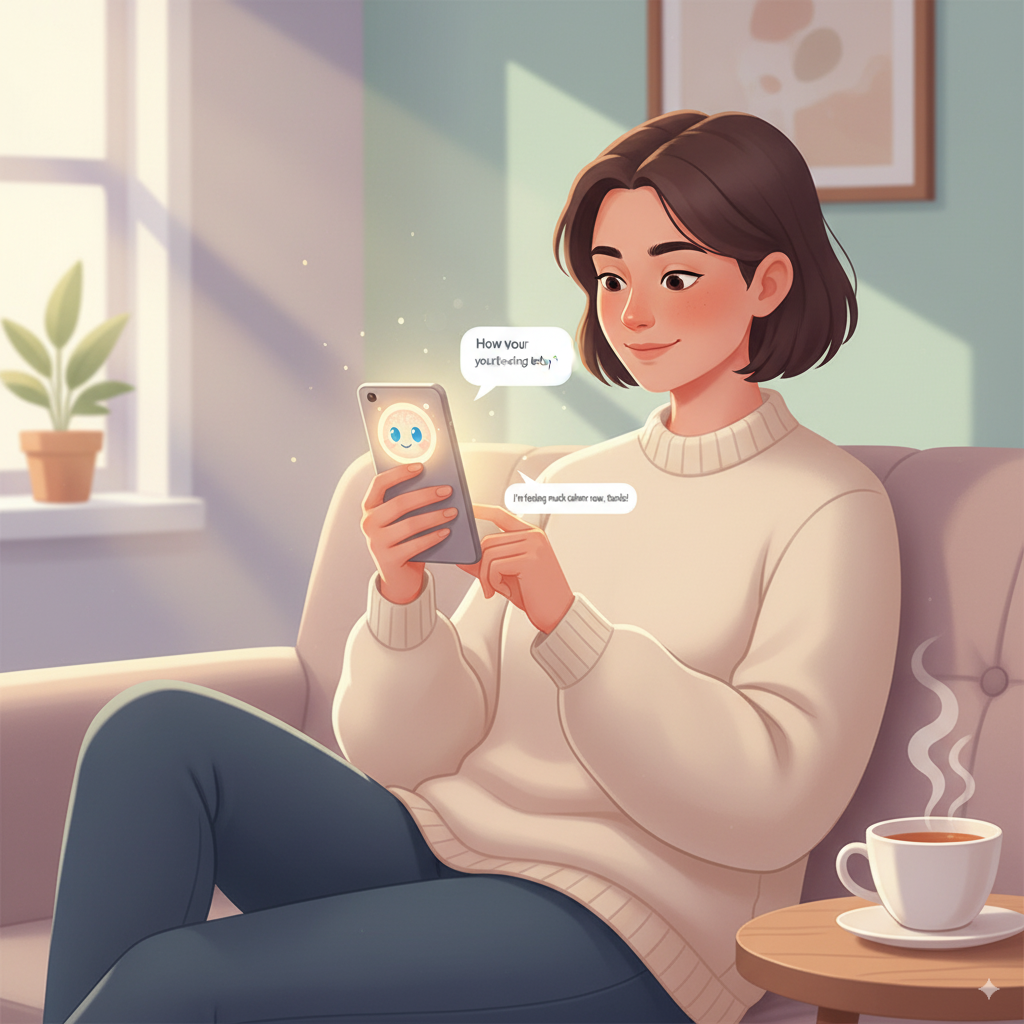
Anxiety is one of the most common mental health challenges today, affecting millions worldwide. From work stress to personal struggles, it can be hard to manage daily life.
Recently, mental health chatbots have emerged as a digital solution, promising support, guidance, and coping strategies—all available 24/7. But the question remains: Can they really help with anxiety? Let’s explore.
🧠 What Are Mental Health Chatbots?
Mental health chatbots are AI-powered digital assistants designed to provide:
- Emotional support 💛
- Coping strategies for stress and anxiety 🌿
- Guidance through exercises like deep breathing, mindfulness, and journaling 🧘♀️
- Tracking and reminders for mental health check-ins 📊
Unlike a human therapist, they are available anytime, making them ideal for immediate support.
🛠 How Mental Health Chatbots Work for Anxiety
- Conversational Support
- Chatbots use natural language processing (NLP) to respond to your messages
- They simulate human conversation, helping you express feelings safely
- Guided Exercises
- Many chatbots guide users through breathing exercises, meditation, and grounding techniques
- Helps reduce immediate anxiety symptoms
- Mood Tracking & Insights
- Chatbots can log your moods daily and generate patterns and insights
- Example: Apps like Moodify.fit subtly integrate chatbot guidance with mood tracking, helping you understand triggers
- Cognitive Behavioral Therapy (CBT) Techniques
- Some chatbots are built on CBT principles
- Provide exercises to reframe negative thoughts and manage anxiety proactively
🌟 Benefits of Using Chatbots for Anxiety
1. 24/7 Availability ⏰
- Anxiety doesn’t follow a 9-to-5 schedule. Chatbots are there whenever you need support.
2. Anonymity & Privacy 🛡
- Users often feel more comfortable sharing thoughts with a chatbot than with a human.
3. Consistency & Reminders 🔔
- Daily check-ins, mood tracking, and gentle reminders help you maintain healthy mental habits.
4. Cost-Effective Support 💰
- Many chatbot-based solutions are free or low-cost compared to traditional therapy.
5. Data-Driven Insights 📊
- Visual reports help identify triggers, patterns, and progress over time
- Helps users take proactive steps to reduce anxiety
⚠️ Limitations of Mental Health Chatbots
While chatbots are helpful, it’s important to know their limitations:
- Not a Replacement for Therapy
- Severe anxiety, panic disorders, or complex mental health issues require a licensed professional
- Limited Emotional Understanding
- Chatbots can’t fully replicate empathy or nuanced human responses
- Privacy Concerns 🔐
- Always check data handling policies before sharing personal information
- Not Suitable for Emergencies 🚨
- In case of suicidal thoughts or crisis situations, immediate professional help is necessary
🧩 Choosing the Right Chatbot
When selecting a mental health chatbot, consider:
- Credibility & Backing: Is it developed with mental health professionals?
- Features: Mood tracking, exercises, journaling, reminders
- User Experience: Easy to use and engaging
- Integration: Some apps like Moodify.fit combine mood tracking and chatbot guidance, giving a holistic approach to anxiety management
✅ Best Practices to Maximize Chatbot Effectiveness
- Combine with Lifestyle Habits: Sleep well 🛌, exercise 🏃♀️, and maintain a balanced diet 🥗
- Track Moods Consistently: Helps the chatbot provide tailored suggestions
- Review Patterns Weekly: Identify triggers and make proactive adjustments
- Use in Conjunction with Therapy: Ideal for self-help between sessions
❓ Frequently Asked Questions (FAQ)
Q1: Can chatbots really reduce anxiety?
A1: Yes, they can provide immediate support, guidance, and coping strategies, especially for mild anxiety.
Q2: Are mental health chatbots safe?
A2: Most are safe, but always check privacy policies and avoid sharing highly sensitive personal data.
Q3: Can chatbots replace therapy?
A3: No, they are best used as a supplement. Severe anxiety requires professional help.
Q4: How do chatbots track mood?
A4: Many use daily prompts, mood scales, and journaling features. Apps like Moodify.fit provide visual insights and pattern recognition.
Q5: Which chatbot is best for anxiety?
A5: Choose one backed by mental health professionals, easy to use, and ideally integrated with mood tracking, such as Moodify.fit.
🌟 Final Thoughts
Mental health chatbots can be a powerful tool for managing mild anxiety, offering immediate support, mood tracking, and coping strategies. While they cannot replace professional therapy, they help you understand your patterns, reduce stress, and stay mindful throughout the day.
Subtle tools like Moodify.fit combine chatbot guidance with mood tracking, giving a complete approach to self-awareness and mental health.
With the right use, chatbots can become your daily companion in building emotional resilience and managing anxiety effectively. 💛



Leave a Reply